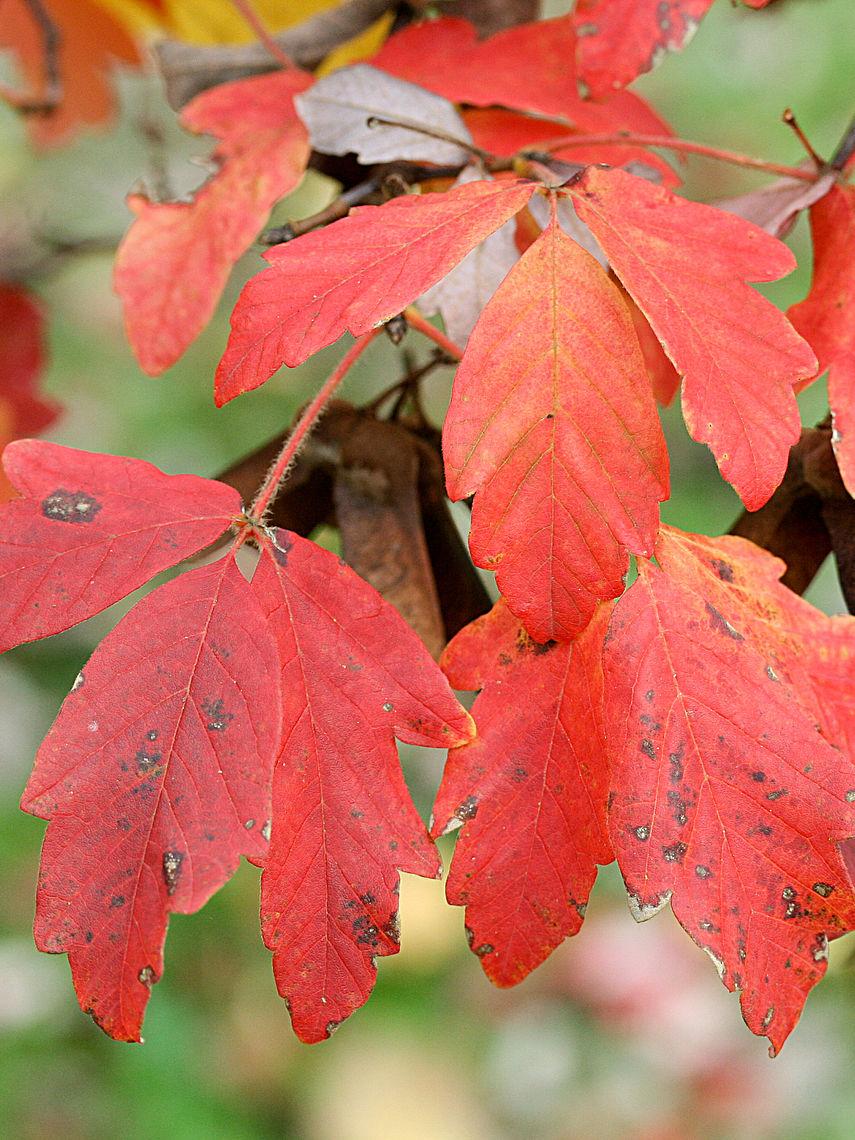

#Paperbark maple fall color full#
In full sun, it varies from a brilliant orange-red to a duller reddish-green or bronze. Fall color develops later than other maples, persisting over a long season. (The species name, griseum, means grayish, and refers to the leaves’ pale undersides). Bronzy when young, they mature to dark bluish-green above and silvery gray-green, with fine hairs, beneath. Leaves are trifoliate (consisting of three leaflets), three to five inches long, coarsely toothed, and held alternately on the stems. (photos: left, in the Seattle Japanese Garden, by Tony Monk right, at the Center for Urban Horticulture, by Corinne Kennedy) Paperbark maple foliage, in summer and fall. In the Pacific Northwest, established trees are considered drought tolerant, needing only occasional watering during our dry summers. Though it prefers moist, well-drained soil in full sun to part shade, it performs well in deeper shade and in clay or compacted soils, providing drainage is adequate. (With time, it will exceed that height, as has our Garden’s 60-year-old specimen, now about 45 feet tall.) Remarkably adaptable, it is reliably cold hardy to USDA Zone 5 (minimum temperature -30 to -20 degrees Fahrenheit), and has no serious pest or disease problems. In our region, it matures to about 30 feet tall by 25 feet wide, with a densely foliaged, oval to oval-rounded habit. Unfortunately, wild populations are fragmented and declining, and this unique maple species is now listed as “Endangered” in the wild.Īcer griseum is a slow growing deciduous tree with slender upright branching. Originally considered a variety of Acer nikoense, it was renamed A. Brought to the West in the late 19th century-and much earlier to Japan- it is now a popular ornamental in temperate regions throughout the world.

Paperbark maple is endemic to mixed forests in central China at elevations of about 5000-6500 feet. According to Washington Park Arboretum records, it was planted in November 1964 as a young tree, about six feet tall, and most likely had been grown in the Arboretum nursery from plant material acquired in the mid-1950s. We are fortunate that the Seattle Japanese Garden contains a large, attractive specimen, located not far from the entrance gate. One of the most striking is Acer griseum, paperbark maple, with bark that peels to reveal a lovely patchwork of texture and color. May be affected by horse chestnut scale, aphids, and Verticillium wilt.In these dark, wet days of winter, I’m always on the lookout for trees with interesting bark-and the beauty that they bring to this muted season.If pruning is necessary, prune during the dormant season and avoid pruning in spring when the sap is running. Low maintenance, this plant needs little pruning.Perfect as a specimen plant in cottage gardens, city gardens, or foundation plantings.A full sun or part shade lover, this plant is easily grown in moist, acidic, well-drained soils.Recipient of the prestigious Award of Garden Merit of the Royal Horticultural Society for its outstanding qualities.A must for those who appreciate winter bark interest! Densely branched with an upright, roundish habit, this slow-growing maple tree is an outstanding four-season tree that is enjoyed by gardeners as it graces the landscape. Small clusters of yellow-green flowers appear in spring in clusters of three (hence the species and common names), but they are not showy. Green above, but gray-green underneath in spring and summer, it turns brilliant red and orange in the fall before shedding for the winter. Equally attractive is the foliage of trifoliate leaves. The light ash-brown bark on both its trunk and branches peels in vertical strips, revealing pale copper-brown wood beneath. Noted for its ravishing exfoliating bark and showy fall color, award-winning Acer triflorum (Three-Flowered Maple) is a small deciduous tree that is a real treasure in the landscape.


 0 kommentar(er)
0 kommentar(er)
